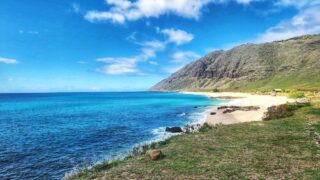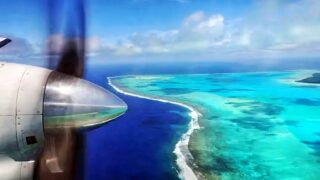On clear nights off our islands, the ocean glows under the stars. You can almost feel the same pull that drew the first voyagers across it centuries ago, long before Europe even knew this ocean existed. Now science is starting to confirm what Pacific people have always said.
A landmark 2020 DNA study from Stanford and international researchers traced genetic links between Polynesians and Native Americans to around the year 1200. That was centuries before any European ships ever reached these waters.
The researchers analyzed more than 800 DNA samples from islands across the Pacific and along the South American coast. They found a shared genetic signature, like breadcrumbs scattered across 4,000 miles of ocean, pointing toward a meeting somewhere near the South Marquesas. Whether it was South Americans drifting west or Polynesians sailing east, the evidence suggests the two peoples found each other long before history said they could.
Hawaii’s place in this story.
This discovery doesn’t just rewrite history. It reframes Hawaii’s place in the Pacific. The first Hawaiians didn’t arrive by accident. They came as part of a wave of exploration that reached from Samoa and Tahiti to the far corners of the Pacific, eventually landing here sometime around 1,000 to 1,200 A.D. Those same navigators, guided by stars, wind, and ocean swells, may have gone even farther east, past the point where maps end.
Hawaii sits not at the edge of the world but near the center of an ancient highway. When we fly today from Honolulu to Tahiti or Rarotonga, we’re retracing the same Pacific pathways that once connected people, food, and stories long before any airline logo existed. Hawaiian Airlines’ service to the South Pacific follows these same pathways, a modern partnership across the same ocean.
Science and story.
For decades, academics dismissed Polynesian oral histories as myth. The DNA tells a different story. It shows that the Pacific was never an isolated world but a network of shared journeys. The sweet potato, a South American plant that somehow found its way across the Pacific and became a Polynesian staple, now looks like a clue that was in plain sight all along.
These stories carried truths about a connected Pacific, where people, plants, and ideas traveled vast distances long before written records. Science doesn’t replace those stories. It confirms them.
The knowledge never disappeared.
It lived quietly in chants, in stories, and in the night sky until a new generation remembered how to use it. That remembering took shape in the 1970s when the Hōkūleʻa and the Polynesian Voyaging Society revived ancient navigation. Each time Hōkūleʻa sails, it reminds us that the Pacific was never a barrier. It was, and still is, a bridge.
We saw Hōkūleʻa on Rarotonga during her most recent voyage and captured our own photos of her as she waited to continue south across the Pacific. Watching that scene, it was impossible not to think about how this canoe carries both science and heritage, retracing the same routes that linked the islands long before anyone called it exploration. The technology has changed, but the impulse to cross the horizon remains the same.
What this means for Hawaii travelers.
Visitors sometimes think of Hawaii as remote, but it has always been part of a much larger network. Understanding this ancient network reframes what Hawaii is: not a remote getaway but a Pacific crossroads that has been active for a thousand years.
Flights between Honolulu, Tahiti, and Rarotonga are the modern version of those same ocean crossings. You can still feel that continuity when you fly south from Hawaii and see the same constellations that guided the first Polynesians.
At Bishop Museum, a single voyaging star map reminds us how the heavens themselves once served as a chart. Standing at South Point, where the island falls away into open ocean, it becomes easier to imagine what it took to leave one island behind and look for the next. The courage it demanded still echoes here.
Mystery and wonder remain.
Scientists still don’t know who sailed first. Either South Americans drifted west with the currents, or Polynesians sailed east on purpose. Either way, they found each other in one of the most remote places on Earth. The fact that we’re still trying to piece together how it happened is proof of how extraordinary it was.
One archaeologist in the study called it “a prehistoric event that left no trace except in DNA.” But anyone who’s stood on a Hawaiian beach at night, feeling the rhythm of the waves, knows that the ocean itself remembers.
Hawaii’s story has always been about connection. The Pacific Highway is still open. We use different vessels now. Maybe that’s why the islands still feel both far and familiar. They were sought and connected, again and again, by people who trusted the sea more than the shore.
Does this change how you think about Hawaii, or does it simply reveal something these islands have known for centuries?
Lead Photo: Beat of Hawaii on Rarotonga with Hōkūleʻa.
Get Breaking Hawaii Travel News






